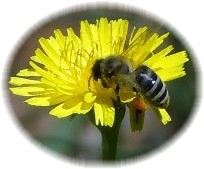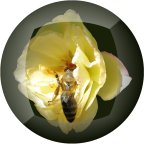What are Pollinators and why do we need them?
The Science
 |
| Home |
| Educators |
| Photographs |
| Links |
| Products |
| Science |
I’ve Created A Butterfly Hair Crown Sweet Basil – Grow it for the Bees 6 Scientists, 1,000 miles, 1 prize: the Artic Bumblebee A team of researchers scours the
wilds of northern Alaska for Bombus
|
|---|
 |
Science of PollinatorsThere are more than 20,000 species of wild bees alone, plus many species of butterflies, flies, moths, wasps, beetles, birds, bats and other animals that contribute to pollination. Pollinated crops include those that provide fruit, vegetables, seeds, nuts and oils. Many of these are important dietary sources of vitamins and minerals, without which the risks of malnutrition might be expected to increase. Several crops also represent an important source of income in developing countries from, for example, the production of coffee and cocoa.Crested HoneycreepersKarner blue butterfliesWhite-winged DovesRufous HummingbirdsLesser long-nosed batwestern prairie fringed orchidMonarch ButterflyTiger Swallowtail ButterflyYou’re a Bee. This Is What It Feels LikeHow to Keep BeesThe Sweet Emotional Life of BeesBees Buzz for Their SupperAustralia's bees and wasps revealed to be as dangerous as its snakesHow Bees WorkHow do honeybees make honey?What's the difference between bees and wasps?
|
'Unusual' Bee Species Drills Apartment-Style Nests Out of Rock
|

